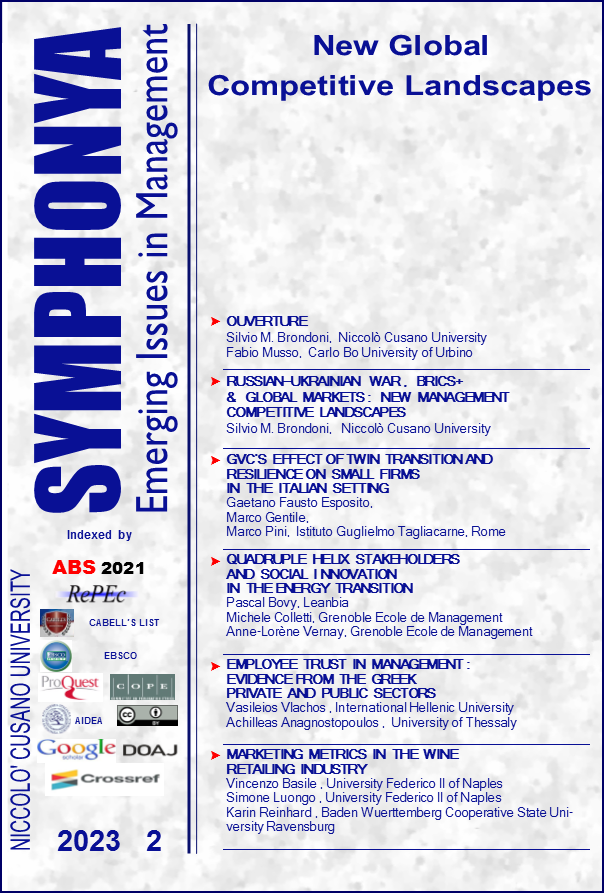Quadruple Helix Stakeholders and Social Innovation in the Energy Transition
DOI:
https://doi.org/10.4468/2023.2.04bovy.coletti.vernayKeywords:
Social Innovation, Energy Transition, Triple/Quadruple Helix, Civil Society, Citizens’ Participation, Global MarketsAbstract
Social innovation (SI) aims at improving people’s life when technological or business innovations are not sufficient. However, the classic Triple Helix (TH) theory does not explicitly deal with SI, and relegates civil society to a passive role. This paper aims to analyze if SI requires an evolution of the TH framework. The methodology is a multi-case study based on SI projects and initiatives in the energy sector.
The main findings are that citizens are involved in SI though to various extents: there are SI projects carried out “for” citizens, “with” citizens, and to a much lesser extent; “by” citizens. SI in the energy sector rely also on the commitment of the local government and the presence of social enterprises. Therefore, we suggest that a Quadruple Helix (QH) approach may be necessary for energy-related SI.
Downloads
Published
How to Cite
Issue
Section
License
Copyright (c) 2023 Symphonya. Emerging Issues in Management

This work is licensed under a Creative Commons Attribution 4.0 International License.
The authors retain all rights to the original work without any restrictions.
License for Published Contents

You are free to copy, distribute and transmit the work, and to adapt the work. You must attribute the work in the manner specified by the author or licensor (but not in any way that suggests that they endorse you or your use of the work).
License for Metadata

Symphonya published articles metadata are dedicated to the public domain by waiving all publisher's rights to the work worldwide under copyright law, including all related and neighboring rights, to the extent allowed by law.
You can copy, modify, distribute and perform the work, even for commercial purposes, all without asking permission.



